Optimization of the Thermal Performance of Na2HPO4·12H2O-Based Gel Phase Change Materials in Solar Greenhouses Using Machine Learning
Abstract
1. Introduction
2. Results and Discussion
2.1. Thermal Characteristics of PCMS Under Taguchi Experimental Design
2.2. Optimization of PCMs Components by Machine Learning
2.2.1. Factor Correlation Analysis
2.2.2. Machine Learning Analysis
2.3. Optimization Model Verification and New PCM Proposed
3. Conclusions
4. Materials and Methods
4.1. Na2HPO4·12H2O Composite Phase Change Materials
4.2. Framework
4.3. Methods
4.3.1. Signal-to-Noise Ratio Analysis and Variance Analysis Method
4.3.2. Candidate Machine Learning Models
- (1)
- Support Vector Regression
- (2)
- Randon Forest
- (3)
- Gradient Boosting Trees
4.3.3. Machine Learning Model Construction
4.3.4. Multi-Objective Optimization and Analysis
4.3.5. Model Parameter Settings
Author Contributions
Funding
Institutional Review Board Statement
Informed Consent Statement
Data Availability Statement
Conflicts of Interest
References
- Li, T.L. Theory and Practice on Vegetable Cultivation in Solar Greenhouse; China Agriculture Press: Beijing, China, 2013. [Google Scholar]
- Tong, G.; Christopher, D.M.; Li, T.; Wang, T. Passive solar energy utilization: A review of cross-section building parameter selection for Chinese solar greenhouses. Renew. Sustain. Energy Rev. 2013, 26, 540–548. [Google Scholar] [CrossRef]
- Panwar, N.; Kaushik, S.; Kothari, S. Solar greenhouse an option for renewable and sustainable farming. Renew. Sustain. Energy Rev. 2011, 15, 3934–3945. [Google Scholar] [CrossRef]
- Zhang, X.; Lv, J.; Dawuda, M.M.; Xie, J.; Yu, J.; Gan, Y.; Zhang, J.; Tang, Z.; Li, J. Innovative passive heat-storage walls improve thermal performance and energy efficiency in Chinese solar greenhouses for non-arable lands. Sol. Energy 2019, 190, 561–575. [Google Scholar] [CrossRef]
- Xu, D.; Du, S.; Willigenburg, V.G.L. Optimal control of Chinese solar greenhouse cultivation. Biosyst. Eng. 2018, 171, 205–219. [Google Scholar] [CrossRef]
- Taki, M.; Rohani, A.; Rahmati-Joneidabad, M. Solar thermal simulation and applications in greenhouse. Inf. Process. Agric. 2018, 5, 83–113. [Google Scholar] [CrossRef]
- Ahamed, S.M.; Guo, H.; Tanino, K. Energy saving techniques for reducing the heating cost of conventional greenhouses. Biosyst. Eng. 2019, 178, 9–33. [Google Scholar] [CrossRef]
- Zhu, J.; Zhang, X.; Hua, W.; Ji, J.; Lv, X. Current status and development of research on phase change materials in agricultural greenhouses: A review. J. Energy Storage 2023, 66, 107104. [Google Scholar] [CrossRef]
- Ren, J.; Zhao, Z.; Zhang, J.; Wang, J.; Guo, S.R.; Sun, J. Study on the hygrothermal properties of a Chinese solar greenhouse with a straw block north wall. Energy Build. 2019, 193, 127–138. [Google Scholar] [CrossRef]
- Zhang, X.; Xie, J.; Zhang, J.; Li, J.; Ma, N.; Mao, E. Simplified heat-transfer calculation for the trapezoidal cross-section wall in Gobi solar greenhouses and greenhouse thermal-load prediction. Biosyst. Eng. 2023, 234, 46–65. [Google Scholar] [CrossRef]
- Zhang, G.; Shi, Y.; Liu, H.; Fei, Z.; Liu, X.; Wei, M.; Liu, F.; Wang, S. Heat transfer performance of an assembled multilayer wall in a Chinese solar greenhouse considering humidity. J. Energy Storage 2021, 33, 102046. [Google Scholar] [CrossRef]
- Liu, X.; Wu, X.; Xia, T.; Fan, Z.; Shi, W.; Li, Y.; Li, T. New insights of designing thermal insulation and heat storage of Chinese solar greenhouse in high latitudes and cold regions. Energy 2022, 242, 122953. [Google Scholar] [CrossRef]
- Wan, X.; Xia, T.; Li, Y.; Sun, Z.; Liu, X.; Li, T. Study on a novel water heat accumulator below the north roof in Chinese solar greenhouse: System design. Appl. Therm. Eng. 2023, 234, 121316. [Google Scholar] [CrossRef]
- Xia, T.; Li, Y.; Wu, X.; Fan, Z.; Shi, W.; Liu, X.; Li, T. Performance of a new active solar heat storage–release system for Chinese assembled solar greenhouses used in high latitudes and cold regions. Energy Rep. 2022, 8, 784–797. [Google Scholar] [CrossRef]
- Cao, K.; Xu, H.J.; Zhang, R.; Xu, D.W.; Yan, L.L.; Sun, Y.C.; Xia, L.R.; Zhao, J.T.; Zou, Z.R.; Bao, E.C. Renewable and sustainable strategies for improving the thermal environment of Chinese solar greenhouses. Energy Build. 2019, 202, 109414. [Google Scholar] [CrossRef]
- Mu, M.; Zhang, S.; Yang, S.; Wang, Y. Phase change materials applied in agricultural greenhouses. J. Energy Storage 2022, 49, 104100. [Google Scholar] [CrossRef]
- Safna, N.; Igor, K. Phase change materials for thermal energy storage applications in greenhouses: A review. Sustain. Energy Technol. Assess. 2022, 52, 102241. [Google Scholar]
- Zhang, J.; Wang, Z.; Li, X.; Wu, X. Novel composite phase change materials with enhancement of light-thermal conversion, thermal conductivity and thermal storage capacity. Solar Energy 2020, 196, 419–426. [Google Scholar] [CrossRef]
- Yang, A.; Xu, X.; Jia, S.; Hao, W. Heat storage and release performance of solar greenhouses made of composite phase change material comprising methyl palmitate and hexadecanol in cold climate. Therm. Sci. Eng. Prog. 2024, 54, 102837. [Google Scholar] [CrossRef]
- Kenisarin, M.M. Thermophysical properties of some organic phase change materials for latent heat storage. A review. Solar Energy 2014, 107, 553–575. [Google Scholar] [CrossRef]
- Hassan, F.; Jamil, F.; Hussain, A.; Ali, H.M.; Janjua, M.M.; Khushnood, S.; Farhan, M.; Altaf, K.; Said, Z.; Li, C. Recent advancements in latent heat phase change materials and their applications for thermal energy storage and buildings: A state of the art review. Sustain. Energy Technol. Assess. 2022, 49, 101646. [Google Scholar] [CrossRef]
- Atinafu, D.G.; Yun, B.Y.; Yang, S.; Kim, S. Encapsulation of dodecane in gasification biochar for its prolonged thermal/shape stability, reliability, and ambient enthalpy storage. Chem. Eng. J. 2022, 437, 135407. [Google Scholar] [CrossRef]
- Junaid, M.F.; Rehman, Z.U.; Čekon, M.; Čurpek, J.; Farooq, R.; Cui, H.; Khan, I. Inorganic phase change materials in thermal energy storage: A review on perspectives and technological advances in building applications. Energy Build. 2021, 252, 111443. [Google Scholar] [CrossRef]
- Lian, P.; Yan, R.; Wu, Z.; Wang, Z.; Chen, Y.; Zhang, L.; Sheng, X. Thermal performance of novel form-stable disodium hydrogen phosphate dodecahydrate-based composite phase change materials for building thermal energy storage. Adv. Compos. Hybrid Mater. 2023, 6, 74. [Google Scholar] [CrossRef]
- Zeng, Z.; Huang, D.; Zhang, L.; Sheng, X.; Chen, Y. An innovative modified calcium chloride hexahydrate–based composite phase change material for thermal energy storage and indoor temperature regulation. Adv. Compos. Hybrid Mater. 2023, 6, 80. [Google Scholar] [CrossRef]
- Fang, Y.; Ding, Y.; Tang, Y.; Liang, X.; Jin, C.; Wang, S.; Gao, X.; Zhang, Z. Thermal properties enhancement and application of a novel sodium acetate trihydrate-formamide/expanded graphite shape-stabilized composite phase change material for electric radiant floor heating. Appl. Therm. Eng. 2019, 150, 1177–1185. [Google Scholar] [CrossRef]
- Li, C.; Zhang, B.; Xie, B.; Zhao, X.; Chen, J. Tailored phase change behavior of Na2SO4·10H2O/expanded graphite composite for thermal energy storage. Energy Convers. Manag. 2020, 208, 112586. [Google Scholar] [CrossRef]
- Wang, H.; Zhang, Y.; Ci, E.; Li, X.; Guo, L.; Wu, L.; Li, J. Preparation and characterization of a solar-driven sodium acetate trihydrate composite phase change material with Ti4O7 particles. Sol. Energy Mater. Sol. Cells 2022, 238, 111591. [Google Scholar] [CrossRef]
- Zhang, Y.; Zhang, X.; Xu, X.; Munyalo, J.M.; Liu, L.; Liu, X.; Lu, M.; Zhao, Y. Preparation and characterization of sodium sulfate pentahydrate/sodium pyrophosphate composite phase change energy storage materials. J. Mol. Liq. 2019, 280, 360–366. [Google Scholar] [CrossRef]
- Prabakaran, R.; Dhamodharan, P.; Sathishkumar, A.; Gullo, P.; Vikram, M.P.; Pandiaraj, S.; Alodhayb, A.; Khouqeer, G.A.; Kim, S.-C. An overview of the state of the art and challenges in the use of gelling and thickening agents to create stable thermal energy storage materials. Energies 2023, 16, 3306. [Google Scholar] [CrossRef]
- Chen, L.; Liu, D.; Yang, L. Progress of heat transfer enhancement technology in phase change energy storage process. Chem. Ind. Eng. Prog. 2017, 36, 291. [Google Scholar]
- Tang, A.; Chen, W.; Shao, X.; Jin, Y.; Li, J.; Xia, D. Experimental investigation of aluminum nitride/carbon fiber-modified composite phase change materials for battery thermal management. Int. J. Energy Res. 2022, 46, 12737–12757. [Google Scholar] [CrossRef]
- Fu, W.; Chen, L.; Lao, J.; He, Z.; Ma, J.; Peng, H.; Chen, W. Adjustment of phase change temperature using KCl to develop composite phase change materials based on super absorbent polymer as carrier for use in building energy conservation. Polymer 2024, 301, 127066. [Google Scholar] [CrossRef]
- Lan, X.Z.; Tan, Z.-C.; Shi, Q.; Yang, C.G. A novel gelling method for stabilization of phase change material Na2HPO4·12H2O with sodium alginate grafted sodium acrylate. Thermochem. Acta 2007, 463, 18–20. [Google Scholar] [CrossRef]
- Wang, X.; Zhang, X.; Hua, W.; Zheng, L.; Liu, L.; Yu, C. Preparation and thermal properties of Na2HPO4·12H2O composite phase change material for thermal energy storage. Chem. Ind. Eng. Prog. 2019, 38, 5457. [Google Scholar]
- Yu, X.; Zhang, Z.; Qian, G.; Jiang, R.; Wang, L.; Huang, R.; Li, Z. Evaluation of PCM thermophysical properties on a compressed air energy storage system integrated with packed-bed latent thermal energy storage. J. Energy Storage 2024, 81, 110519. [Google Scholar] [CrossRef]
- Luo, K.; Zeng, Z.; Ye, W.; Wu, D.; Liu, J. Effect of the added thickening agents on the thermal and physical properties of the nucleating agent-free Na2HPO4·12H2O. J. Sol. Energy Eng. 2023, 145, 021010. [Google Scholar] [CrossRef]
- Liu, W.; Liu, G.; Shi, W.; Tang, X.; Wu, X.; Wu, J.; Xu, Z.; Zhang, F.; Yang, M. Experimental Investigation on Thermal Performance Optimization of Na2HPO4·12H2O-Based Gel Phase Change Materials for Solar Greenhouse. Gels 2025, 11, 434. [Google Scholar] [CrossRef]
- Kathuria, C.; Mehrotra, D.; Misra, N.K. A novel random forest approach to predict phase transition. Int. J. Syst. Assur. Eng. Manag. 2021, 13, 494–503. [Google Scholar] [CrossRef]
- Alade, O.I.; Rahman, A.A.M.; Saleh, A.T. Predicting the specific heat capacity of alumina/ethylene glycol nanofluids using support vector regression model optimized with Bayesian algorithm. Sol. Energy 2019, 183, 74–82. [Google Scholar] [CrossRef]
- Anooj, G.V.S.; Marri, G.K.; Balaji, C. A machine learning methodology for the diagnosis of phase change material-based thermal management systems. Appl. Therm. Eng. 2023, 222, 119864. [Google Scholar] [CrossRef]
- Ziapour, M.B.; Hashtroudi, A. Performance study of an enhanced solar greenhouse combined with the phase change material using genetic algorithm optimization method. Appl. Therm. Eng. 2017, 110, 253–264. [Google Scholar] [CrossRef]
- Hameed, Z.; Vatn, J.; Heggset, J. Challenges in the reliability and maintainability data collection for offshore wind turbines. Renew. Energy 2011, 36, 2154–2165. [Google Scholar] [CrossRef]
- Li, P.; Min, X.-C. Accurate marking method of network attacking information based on big data analysis. In Proceedings of the 2019 International Conference on Intelligent Transportation, Big Data & Smart City (ICITBS), Changsha, China, 12–13 January 2019; IEEE: Piscataway, NJ, USA, 2019; pp. 228–231. [Google Scholar]
- Wang, H.; Lei, Z.; Zhang, X.; Zhou, B.; Peng, J. A review of deep learning for renewable energy forecasting. Energy Convers. Manag. 2019, 198, 111799. [Google Scholar] [CrossRef]
- Hanyu, E.; Cui, Y.; Pedrycz, W.; Fayek, A.R.; AbouRizk, S. Strategies for designing machine learning models in renewable energy with insufficient data. Energy 2024, 311, 133475. [Google Scholar] [CrossRef]
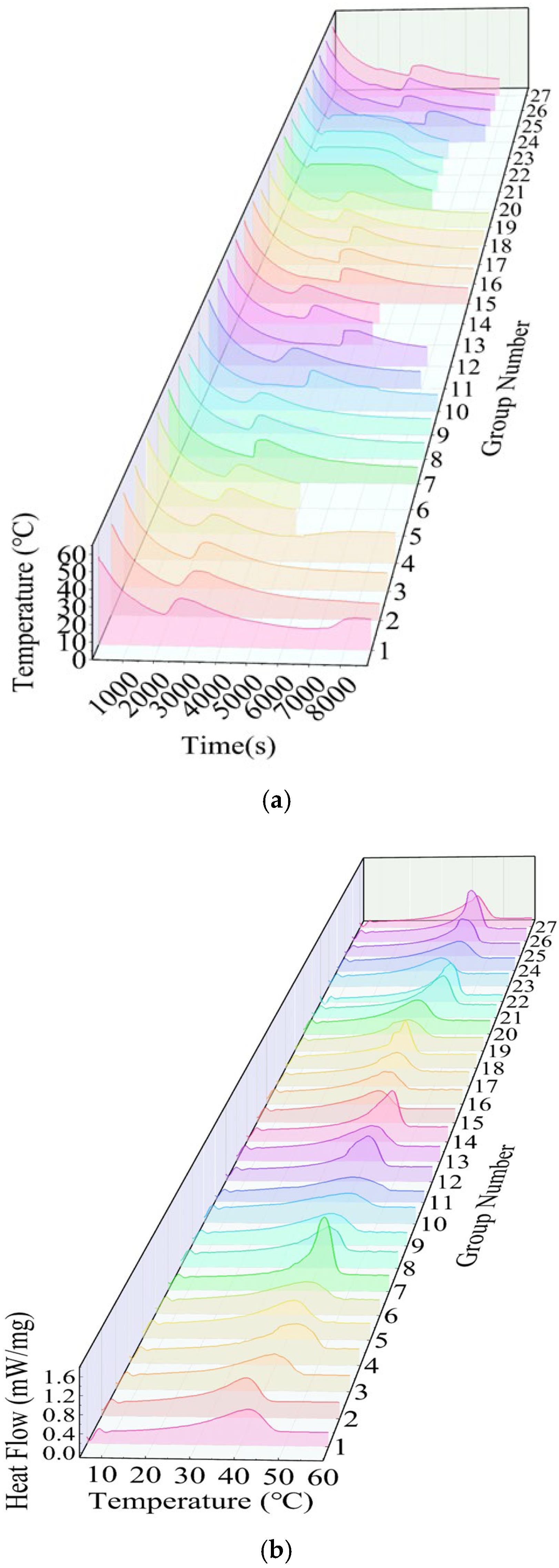
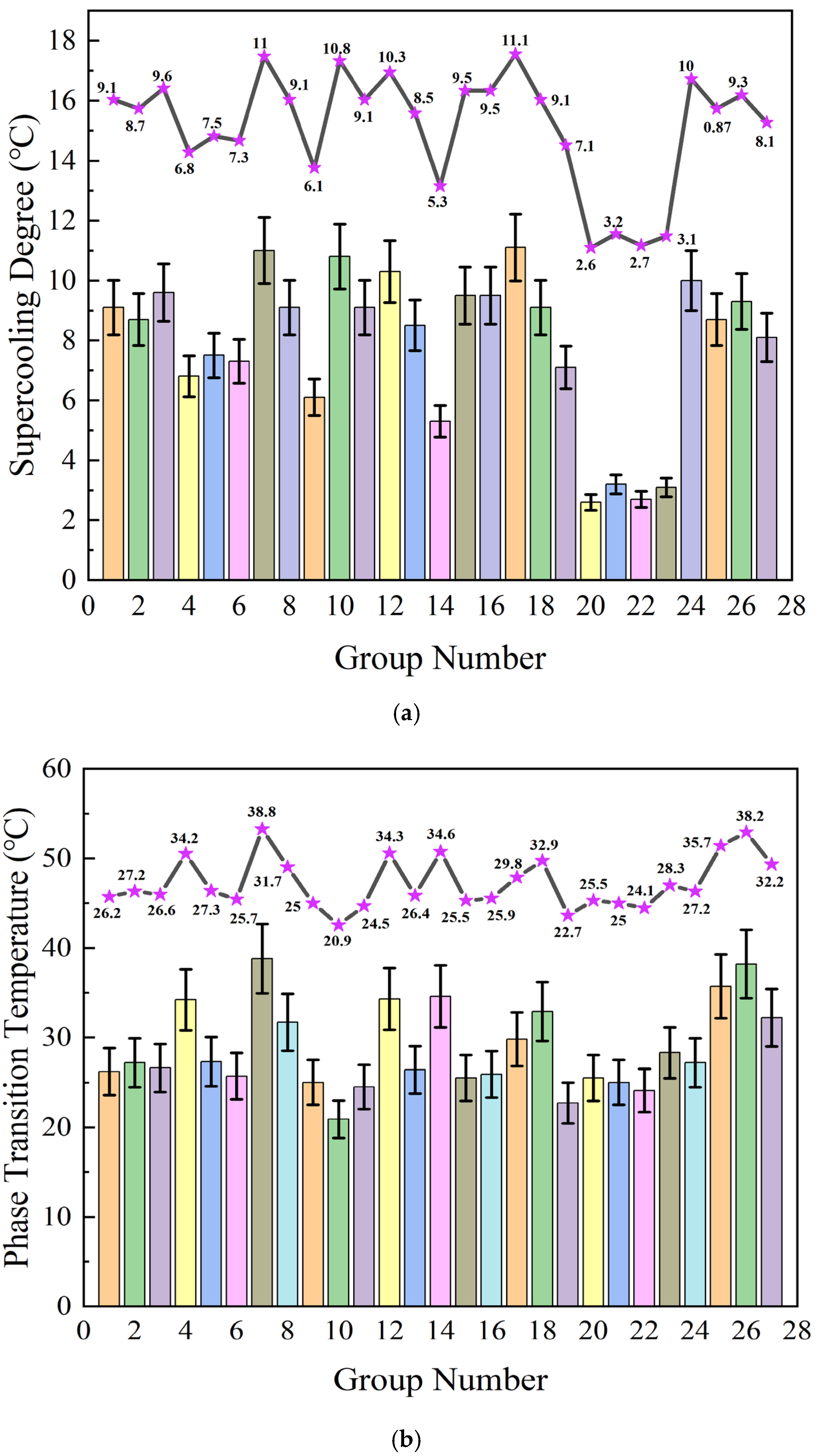

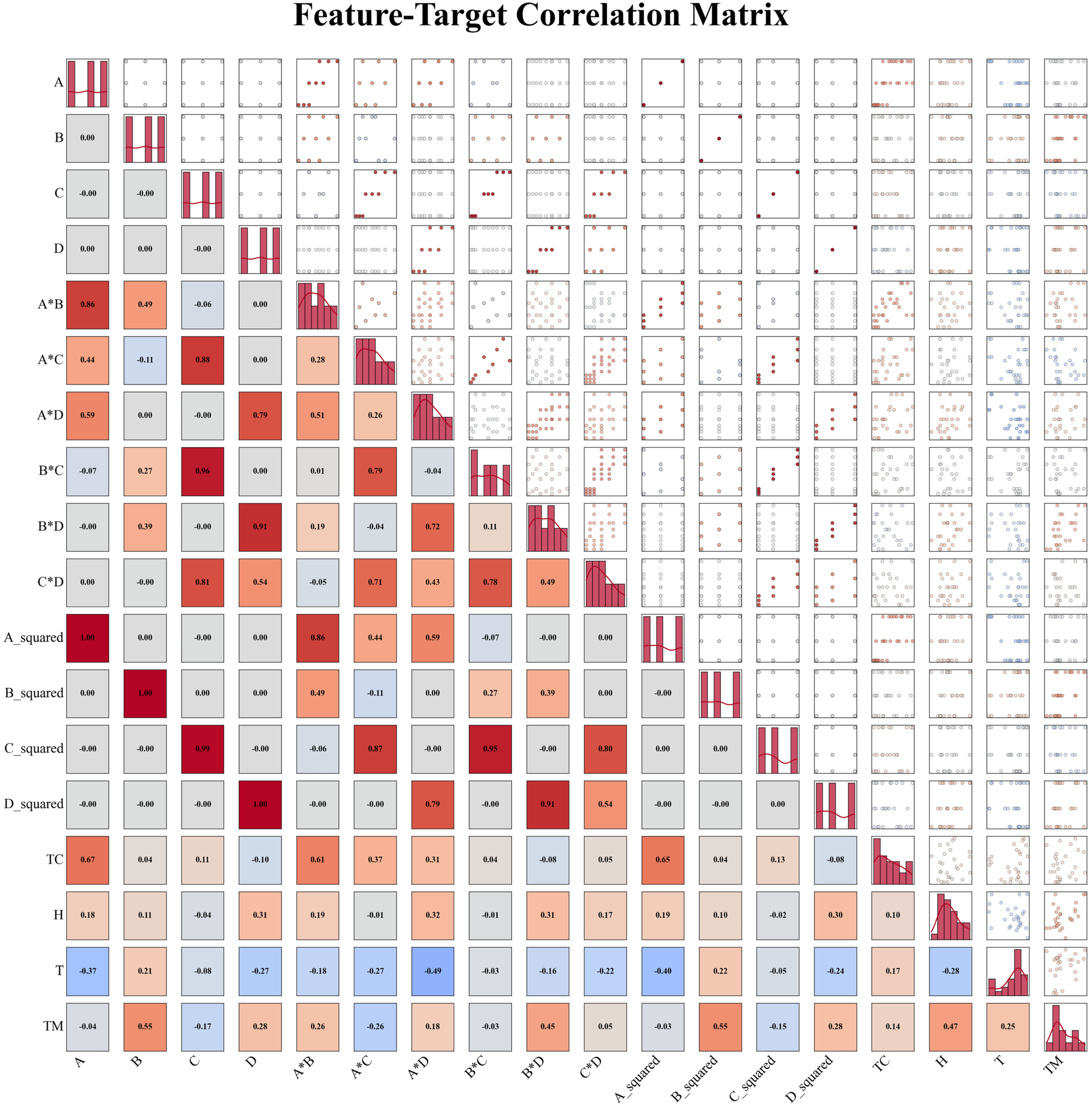
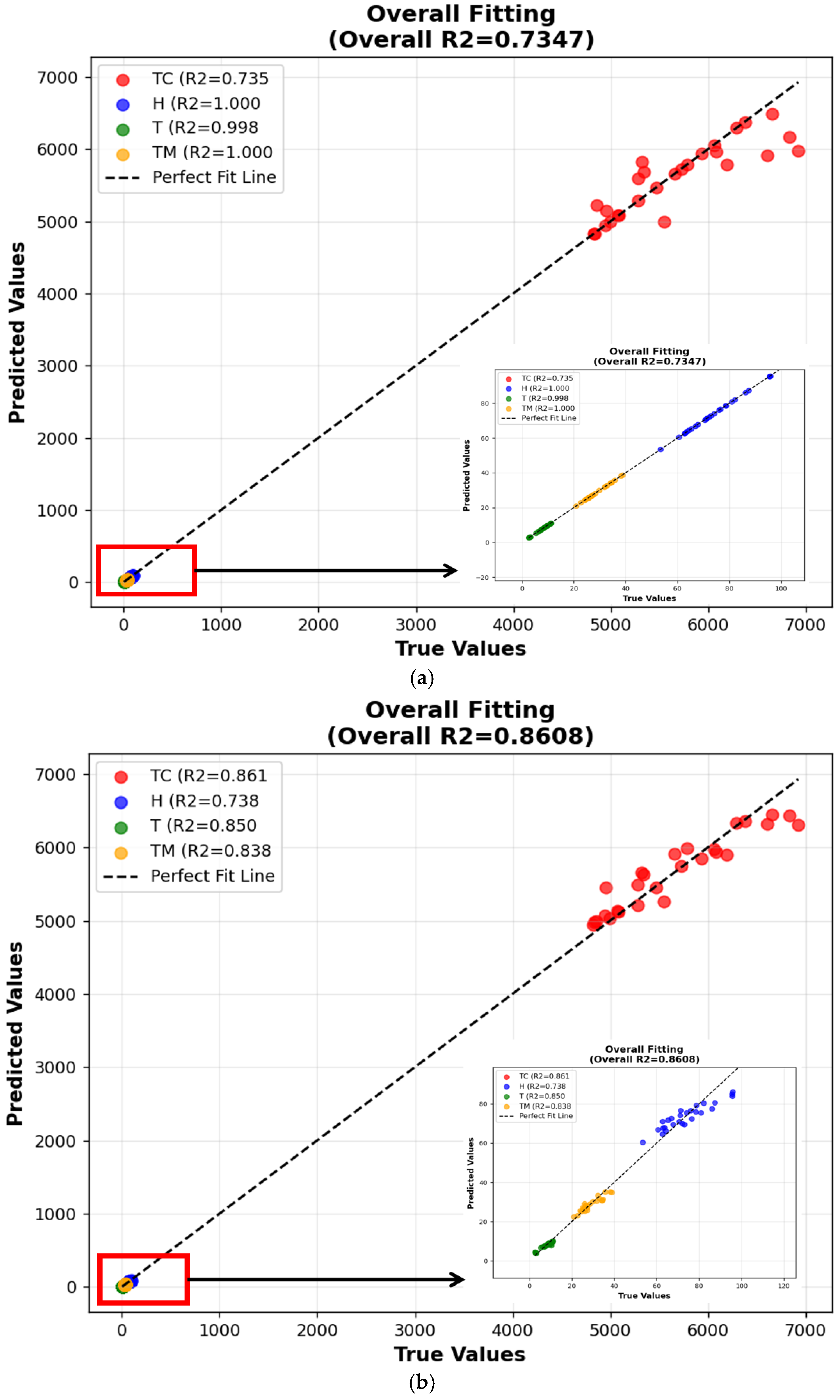

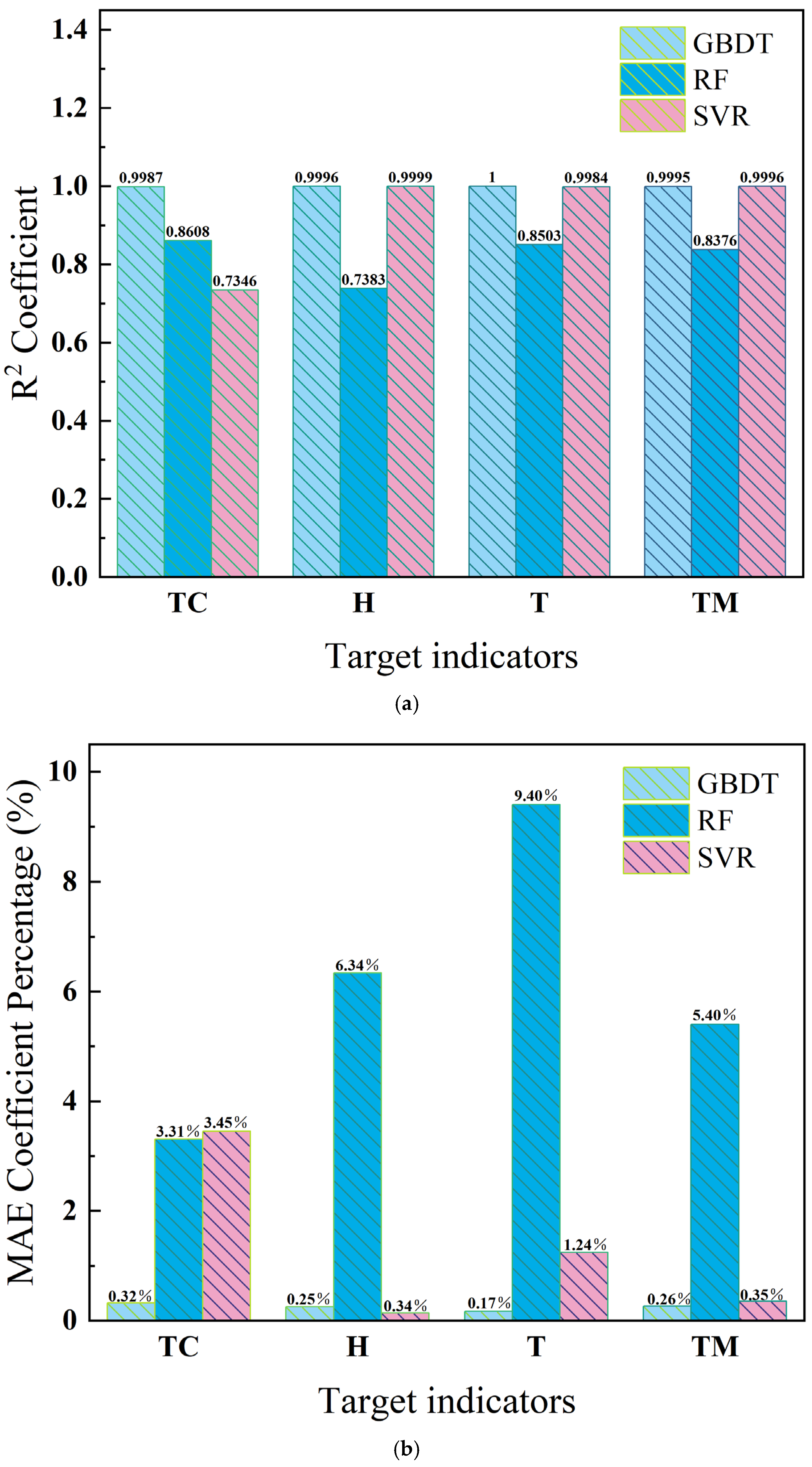
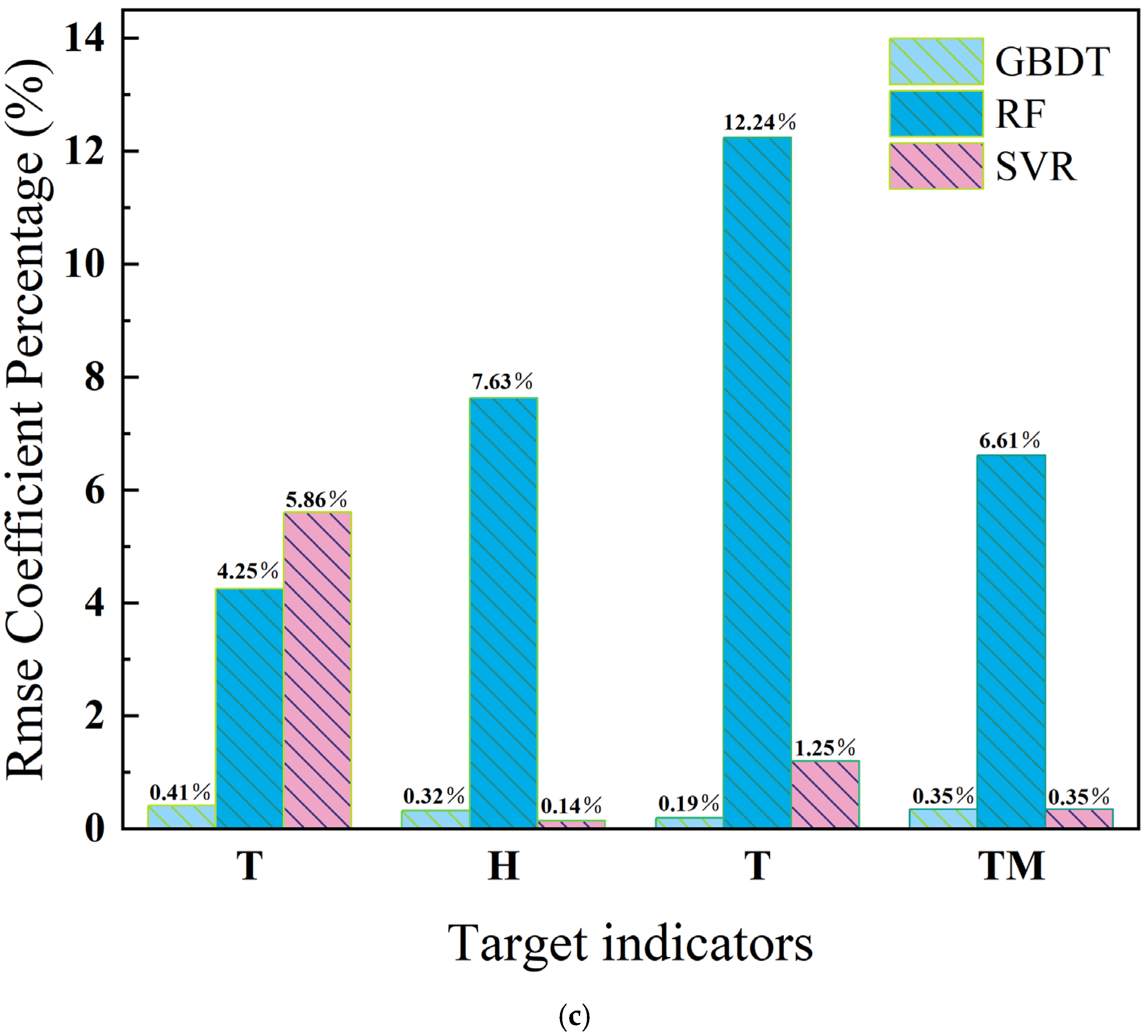

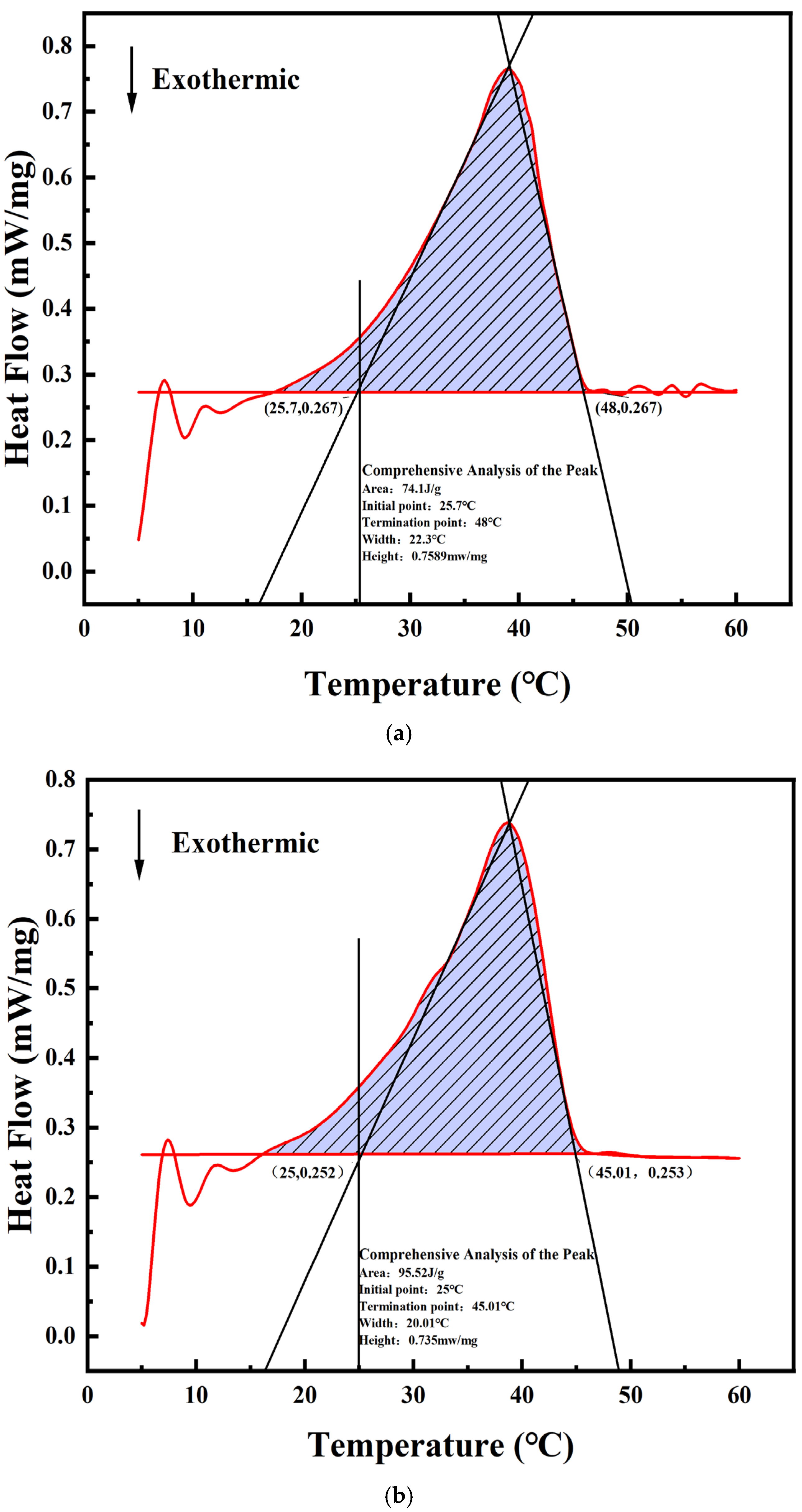
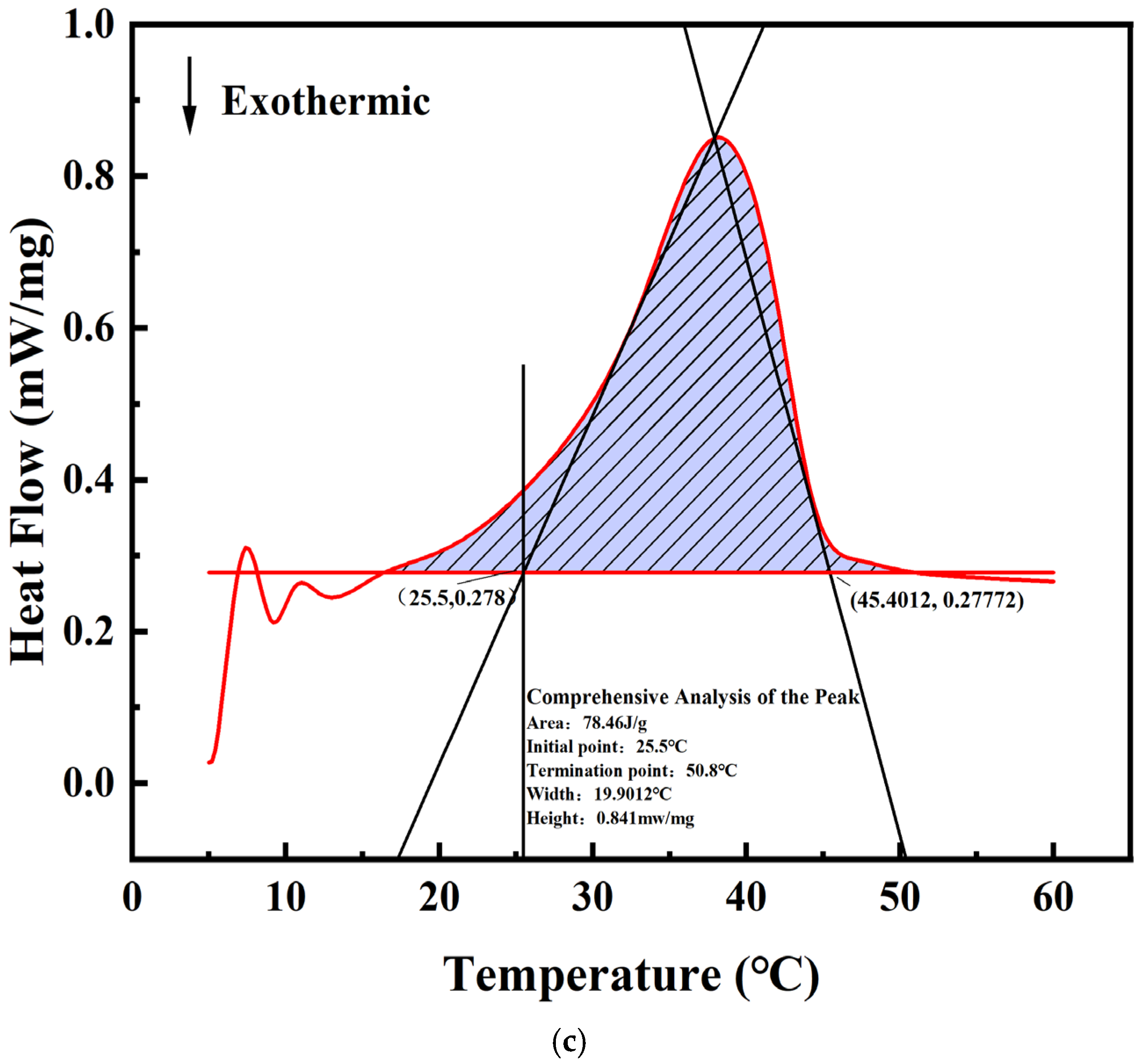
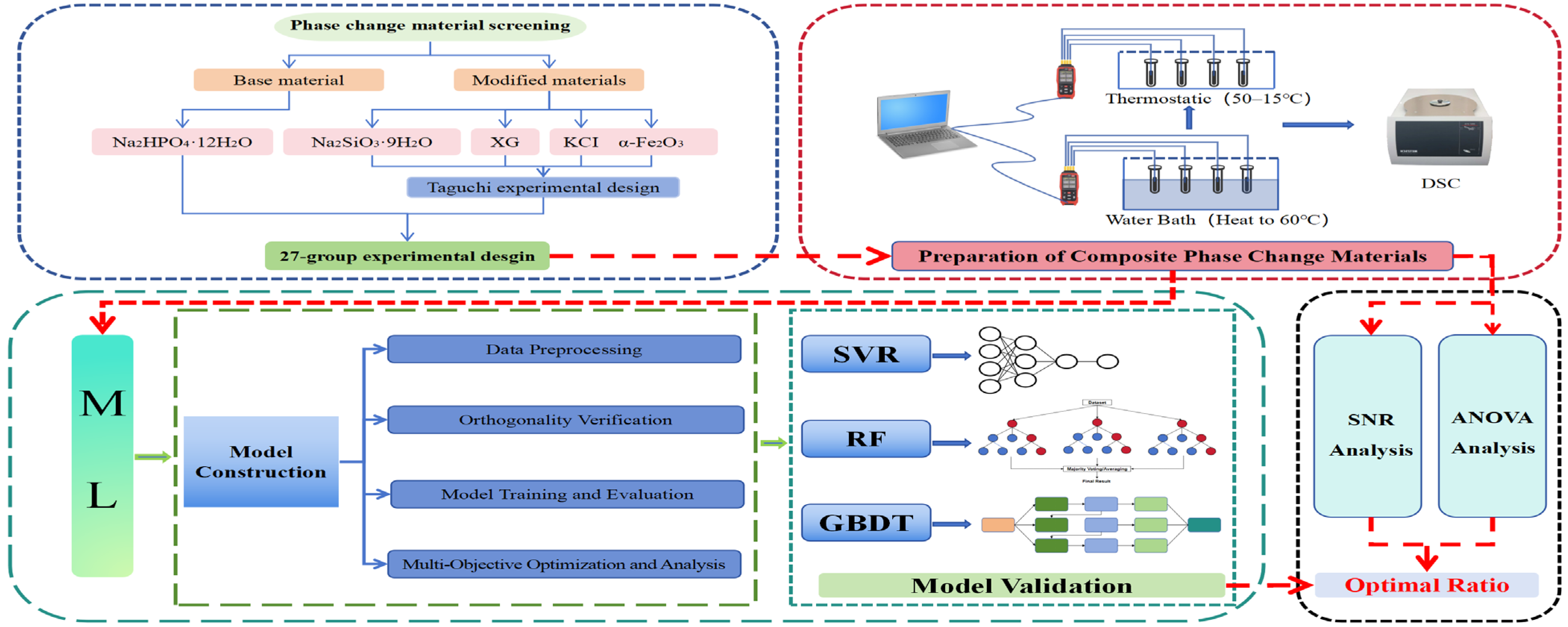
| Group Number | A | B | C | D | TC | H | T | TM |
|---|---|---|---|---|---|---|---|---|
| 1 | 3 | 12 | 0.1 | 2 | 5078 | 72.95 | 9.1 | 26.2 |
| 2 | 3 | 12 | 0.1 | 3 | 4940 | 60.51 | 8.7 | 27.2 |
| 3 | 3 | 12 | 0.1 | 4 | 4830 | 66.81 | 9.6 | 26.6 |
| 4 | 3 | 14 | 0.2 | 3 | 5550 | 80.88 | 6.8 | 34.2 |
| 5 | 3 | 14 | 0.2 | 4 | 4993 | 76.04 | 7.5 | 27.3 |
| 6 | 3 | 14 | 0.2 | 2 | 4852 | 64.35 | 7.3 | 25.7 |
| 7 | 3 | 16 | 0.3 | 4 | 5286 | 95.73 | 11.0 | 38.8 |
| 8 | 3 | 16 | 0.3 | 2 | 5083 | 72.13 | 9.1 | 31.7 |
| 9 | 3 | 16 | 0.3 | 3 | 4833 | 71.07 | 6.1 | 25.0 |
| 10 | 4 | 12 | 0.3 | 2 | 6608 | 62.68 | 10.8 | 20.9 |
| 11 | 4 | 12 | 0.3 | 3 | 5344 | 63.67 | 9.1 | 24.5 |
| 12 | 4 | 12 | 0.3 | 4 | 6927 | 78.73 | 10.3 | 34.3 |
| 13 | 4 | 14 | 0.1 | 3 | 5467 | 82.19 | 8.5 | 26.4 |
| 14 | 4 | 14 | 0.1 | 4 | 4955 | 87.42 | 5.3 | 34.6 |
| 15 | 4 | 14 | 0.1 | 2 | 6193 | 67.78 | 9.5 | 25.5 |
| 16 | 4 | 16 | 0.2 | 4 | 5724 | 65.29 | 9.5 | 25.9 |
| 17 | 4 | 16 | 0.2 | 2 | 6084 | 53.36 | 11.1 | 29.8 |
| 18 | 4 | 16 | 0.2 | 3 | 5284 | 70.53 | 9.1 | 32.9 |
| 19 | 5 | 12 | 0.2 | 2 | 5322 | 62.97 | 7.1 | 22.7 |
| 20 | 5 | 12 | 0.2 | 3 | 5933 | 78.46 | 2.6 | 25.5 |
| 21 | 5 | 12 | 0.2 | 4 | 6059 | 95.52 | 3.2 | 25.0 |
| 22 | 5 | 14 | 0.3 | 3 | 5654 | 86.14 | 2.7 | 24.1 |
| 23 | 5 | 14 | 0.3 | 4 | 5782 | 62.74 | 3.1 | 28.3 |
| 24 | 5 | 14 | 0.3 | 2 | 6838 | 76.46 | 10.0 | 27.2 |
| 25 | 5 | 16 | 0.1 | 4 | 6378 | 74.15 | 8.7 | 35.7 |
| 26 | 5 | 16 | 0.1 | 2 | 6290 | 95.52 | 9.3 | 38.2 |
| 27 | 5 | 16 | 0.1 | 3 | 6660 | 71.26 | 8.1 | 32.2 |
| A | B | C | D | TC | H | T | TM | Score | |
|---|---|---|---|---|---|---|---|---|---|
| 1 | 5% | 12% | 0.20% | 3% | 5933 | 78.5 | 2.6 | 25.5 | 0.795 |
| 2 | 5% | 12% | 0.20% | 4% | 6059 | 95.5 | 3.2 | 25.0 | 0.781 |
| 3 | 5% | 12% | 0.10% | 3% | 5931 | 74.1 | 2.8 | 25.7 | 0.780 |
| 4 | 5% | 12% | 0.30% | 4% | 6611 | 83.7 | 3.1 | 29.1 | 0.776 |
| 5 | 5% | 14% | 0.30% | 3% | 5654 | 86.1 | 2.7 | 24.1 | 0.747 |
| Level | Element | |||
|---|---|---|---|---|
| A Na2SiO3·9H2O | B KCI | C Nano-α-Fe2O3 | D XG | |
| (wt%) | (wt%) | (wt%) | (wt%) | |
| 1 | 3 | 12 | 0.1 | 2 |
| 2 | 4 | 14 | 0.2 | 3 |
| 3 | 5 | 16 | 0.3 | 4 |
| GBDT | RF | SVR | |
|---|---|---|---|
| 1 | n_estimators = 100 | n_estimators = 100 | kernel = rbf |
| 2 | max_depth = 3 | max_depth = 5 | C = 100 |
| 3 | learning_rate = 0.1 | random_state = 42 | epsilon = 0.1 |
| 4 | random_state = 42 | n_jobs = −1 | gamma = scale |
Disclaimer/Publisher’s Note: The statements, opinions and data contained in all publications are solely those of the individual author(s) and contributor(s) and not of MDPI and/or the editor(s). MDPI and/or the editor(s) disclaim responsibility for any injury to people or property resulting from any ideas, methods, instructions or products referred to in the content. |
© 2025 by the authors. Licensee MDPI, Basel, Switzerland. This article is an open access article distributed under the terms and conditions of the Creative Commons Attribution (CC BY) license (https://creativecommons.org/licenses/by/4.0/).
Share and Cite
Liu, W.; Wu, X.; Yang, M.; Huang, Y.; Xu, Z.; Yao, M.; Bai, Y.; Zhang, F. Optimization of the Thermal Performance of Na2HPO4·12H2O-Based Gel Phase Change Materials in Solar Greenhouses Using Machine Learning. Gels 2025, 11, 744. https://doi.org/10.3390/gels11090744
Liu W, Wu X, Yang M, Huang Y, Xu Z, Yao M, Bai Y, Zhang F. Optimization of the Thermal Performance of Na2HPO4·12H2O-Based Gel Phase Change Materials in Solar Greenhouses Using Machine Learning. Gels. 2025; 11(9):744. https://doi.org/10.3390/gels11090744
Chicago/Turabian StyleLiu, Wenhe, Xuhui Wu, Mengmeng Yang, Yuhan Huang, Zhanyang Xu, Mingze Yao, Yikui Bai, and Feng Zhang. 2025. "Optimization of the Thermal Performance of Na2HPO4·12H2O-Based Gel Phase Change Materials in Solar Greenhouses Using Machine Learning" Gels 11, no. 9: 744. https://doi.org/10.3390/gels11090744
APA StyleLiu, W., Wu, X., Yang, M., Huang, Y., Xu, Z., Yao, M., Bai, Y., & Zhang, F. (2025). Optimization of the Thermal Performance of Na2HPO4·12H2O-Based Gel Phase Change Materials in Solar Greenhouses Using Machine Learning. Gels, 11(9), 744. https://doi.org/10.3390/gels11090744






